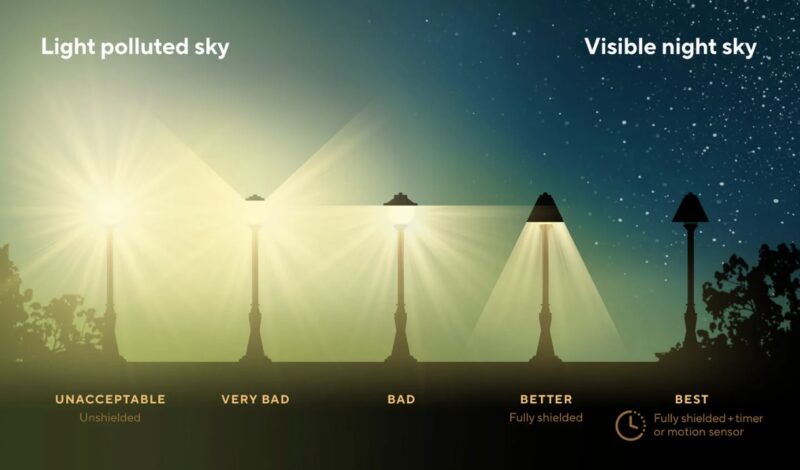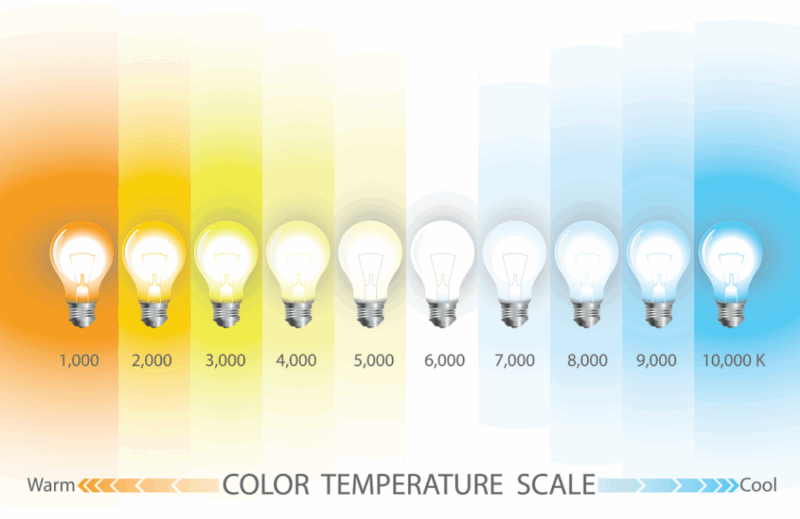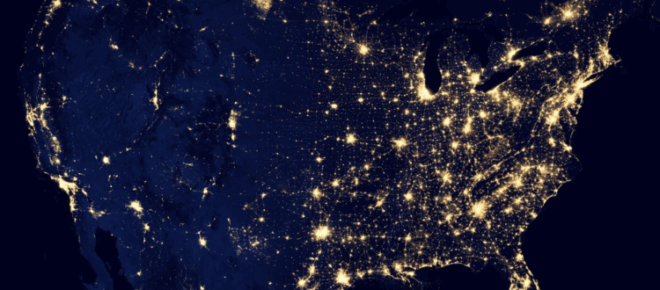What is Light Pollution?
Light pollution comes in several forms, including skyglow (glowing haze over highly populated areas), light trespass (light that reaches beyond intended or needed area), and glare (light that excessively illuminates areas or objects). This pollution can be caused by street and house lights, vehicle headlights, billboards, and even gas flares from oil fields. Unfortunately, night sky brightness worldwide is only continuing to increase in both intensity and extent.

Photo from DarkSky
Everything Needs to Sleep
Research has shown that artificial night lighting can endanger pollinators, birds, and bats, because it disrupts their sleep cycles and navigation systems. It can also cause mutations and stunting in plants. Additionally, according to the Xerces Society for Invertebrate Conservation, around 60% of insects are active at dusk, night, and dawn including species of moths, fireflies, beetles, flies, and bees. At Friends of the Rouge, we advise against installing garden lighting or flood lighting. If you must light your garden, we recommend:
- Keeping dark areas around sanctuary plantings such trees, hedgerows, native gardens and rain gardens
- Using shielded amber lighting with a color temperature of 3000K or less
- Using short, downward facing lights
- Using timed or motion sensing lights that are only on for an hour after sunset
- Close curtains at night to keep your indoor lights indoors

The Color Temperature Scale shows amber/orange light to the left at 1,000 K, to white light at 6,000 K, and cool/blue light at 10,000 K to the right.
Additional Resources
Xerces Society – In the Life of Nocturnal Pollinators webinar
https://www.xerces.org/blog/to-protect-pollinators-we-need-to-fight-light-pollution
Categories
-
 BlogRead the latest blog posts from your FOTR team.
BlogRead the latest blog posts from your FOTR team. -
News & EventsLearn more about upcoming FOTR events and projects
